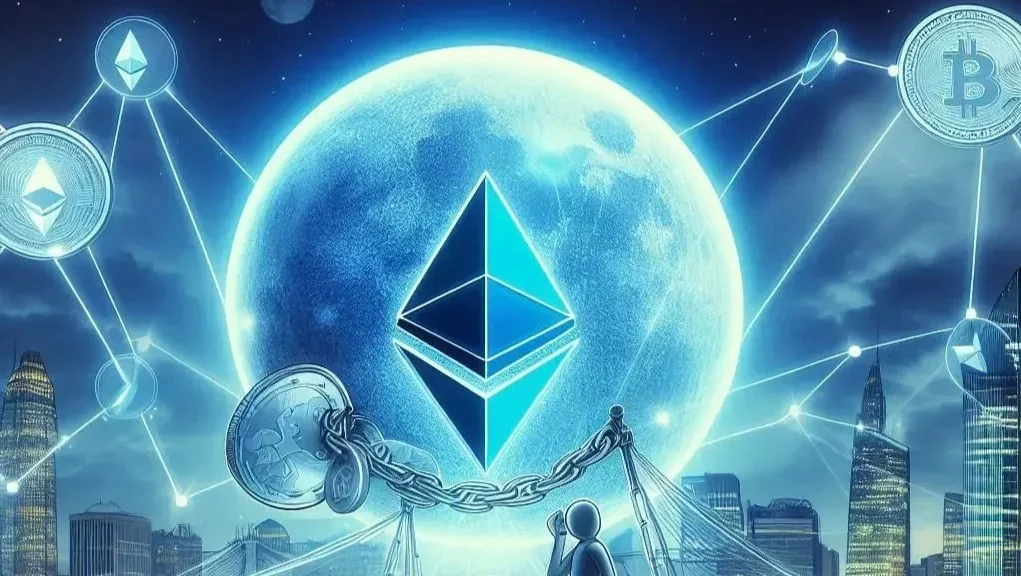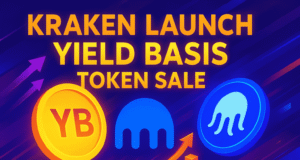Ethereum, once the wild west of crypto speculation, is quietly transforming into the backbone of traditional finance. Forget the Lambo dreams and meme coin madness; the future of Ethereum is being built on the surprisingly solid foundations of stablecoins and tokenized real-world assets (RWAs). Think of it as Ethereum ditching the rave and putting on a suit – a very secure, decentralized suit.
Ethereum’s Future: How Stablecoins & RWAs Drive Growth
Ethereum’s position in the digital economy is undergoing a significant transformation. No longer viewed only as a platform for speculative trading or decentralized applications, Ethereum is increasingly becoming the global settlement layer for traditional finance (TradFi). This shift is being driven by the widespread adoption of stablecoins and the rapid rise of tokenized real-world assets (RWAs).
Industry analysts suggest that these two elements could define Ethereum’s long-term future, with its market capitalization now heavily influenced. But why are these two seemingly unglamorous assets so crucial to Ethereum’s success?
Why Stablecoins and RWAs Matter for Ethereum
Imagine Ethereum as a bustling city. Stablecoins are the reliable buses, efficiently moving value around, while RWAs are the shiny new skyscrapers, attracting investment and long-term residents. The more assets secured and transacted on the Ethereum blockchain, the more value flows into the network, directly strengthening Ethereum’s financial foundation.
In a recent analysis shared researchers emphasized that the market capitalization of tokenized assets on Ethereum effectively serves as the floor for ETH’s market cap. It’s like having a guaranteed minimum income, ensuring Ethereum’s value has a solid base, no matter how wild the crypto weather gets.
Stablecoins already account for a massive portion of Ethereum’s transaction activity. From Tether’s USDT to Circle’s USDC, billions of dollars move across Ethereum daily in the form of stablecoins, which are pegged to fiat currencies and used for payments, remittances, and decentralized finance (DeFi) applications.
Meanwhile, RWAs such as tokenized treasury bills, bonds, and even real estate are gaining momentum, adding another layer of value to Ethereum’s infrastructure.
Stablecoins as Ethereum’s Breakthrough Product
For years, much of the public perception of crypto revolved around speculative trading, volatility, and risk. However, stablecoins have started to change this narrative. They’re the gateway drug to DeFi, but in a responsible, financially sound way.
According to DeFi_Dad, host ofThe Edge_Pod, stablecoins are finally giving Ethereum and decentralized finance the credibility needed to be taken seriously. Finally, Mom can understand what you’re doing with your computer all day!
Unlike Bitcoin, which is often linked to volatile price movements, stablecoins provide practical utility. They enable everyday transactions, cross-border transfers, and access to yields of 5–10% on-chain, attracting not only crypto-native users but also mainstream investors.
DeFi_Dad compared stablecoins to the “ChatGPT moment for crypto” — a breakthrough product that instantly resonates with people outside the crypto bubble. For many, stablecoins serve as the gateway into DeFi and Ethereum, leading to broader engagement with tokenized assets, lending platforms, and yield-generation protocols.
Institutional Adoption and Media Recognition
Stablecoins have moved beyond niche usage and are now widely recognized regulators, and financial institutions. Traditional media coverage, once dominated has shifted toward highlighting the utility of stable digital currencies. No longer are we just talking about scams and rug pulls; the grown-ups are finally paying attention.
For Ethereum, this trend represents validation. As the majority of stablecoins run on Ethereum, the network benefits directly from their growth. The larger the circulation of stablecoins, the more transaction fees, liquidity, and activity are funneled into Ethereum’s ecosystem.
The Rise of Tokenized Real-World Assets (RWAs)
Alongside stablecoins, tokenized RWAs are positioning Ethereum as a central hub for the next era of finance. Tokenized assets include anything from U.S. Treasury bills to corporate bonds, equities, and commodities, all represented digitally on the blockchain.
The appeal is clear: tokenization unlocks 24/7 trading, instant settlement, global accessibility, and lower costs compared to traditional systems. Analysts believe the tokenization market could grow into the trillions over the next decade, and Ethereum is currently the leading platform for hosting these assets.
Ethereum is building a foundation of stability and growth that traditional financial players find increasingly attractive.
Technical Upgrades Strengthening Ethereum
Ethereum’s future is also being reinforced . Recently, developers released Go-Pulse v3.3.0, an upgrade that aligns with the Ethereum mainnet’s Geth v1.16.3 release.
This update brings greater speed, efficiency, and scalability to the network, ensuring Ethereum remains capable of handling the growing demand from stablecoin transactions and RWA settlements.
PulseChain, an Ethereum-compatible blockchain, has already integrated these improvements, further validating Ethereum’s role as a reliable testbed for innovation.
A Stronger Foundation for Traditional Finance
The shift toward stablecoins and tokenized assets highlights a major narrative change: Ethereum is no longer just for crypto enthusiasts — it is becoming essential infrastructure for global finance.
Stablecoins provide the liquidity and trust, while tokenized RWAs bring real-world value onto the chain. Together, they create a feedback loop where Ethereum benefits from every new dollar that enters its ecosystem, whether in the form of digital dollars, tokenized securities, or DeFi yield products.
Looking Ahead: Ethereum as the Settlement Layer of Choice
As Ethereum strengthens its position, experts believe it is on track to serve as the compliant, global settlement layer for traditional finance. Banks, fintech firms, and asset managers are already exploring Ethereum-based solutions for payments, tokenization, and trading.
If current trends continue, the Ethereum market cap will increasingly reflect the value of stablecoins and tokenized assets it supports. This could give Ethereum a stability advantage over other blockchains that rely more heavily on speculative activity.
For investors, Ethereum’s evolution represents a more mature and long-term growth story, driven not just .
Conclusion
Ethereum’s future now runs on two pillars: stablecoins and tokenized assets. These forces are not only shaping Ethereum’s market cap but also redefining its place in global finance. With ongoing technical upgrades and growing institutional interest, Ethereum is well-positioned to remain the backbone of the decentralized economy and beyond.
The next decade could see Ethereum transform into the default financial settlement network, bridging the gap between traditional finance and blockchain innovation.





